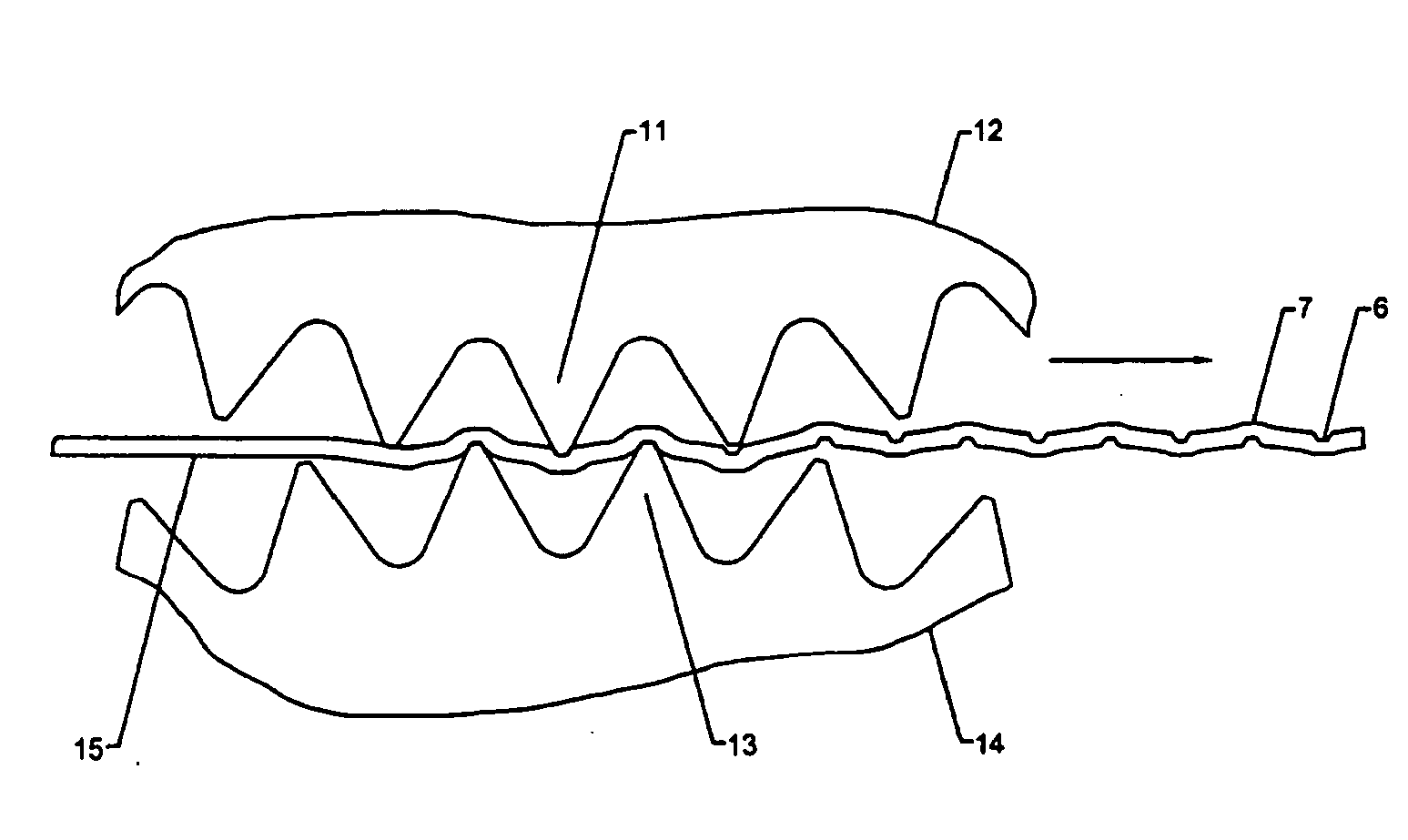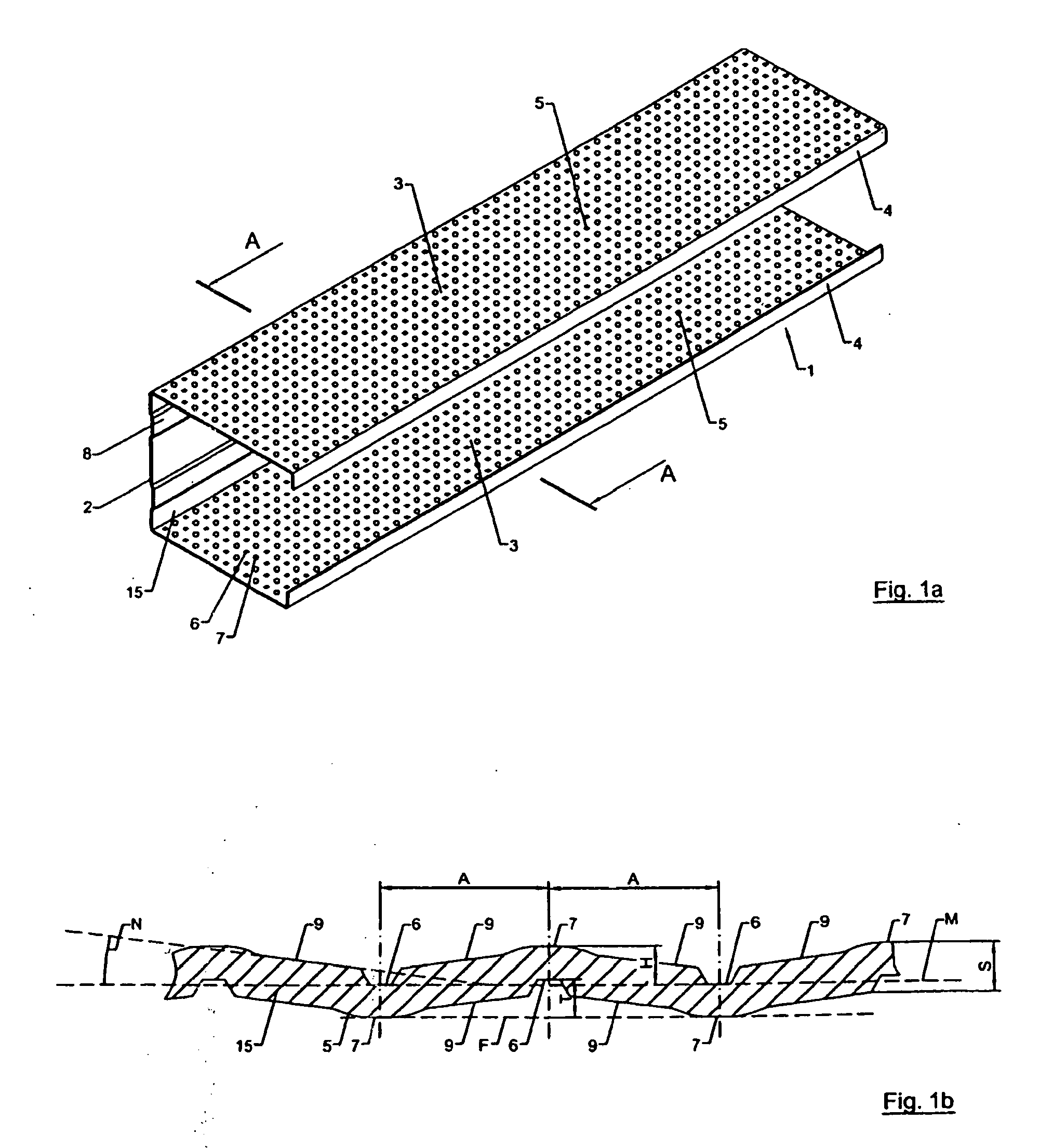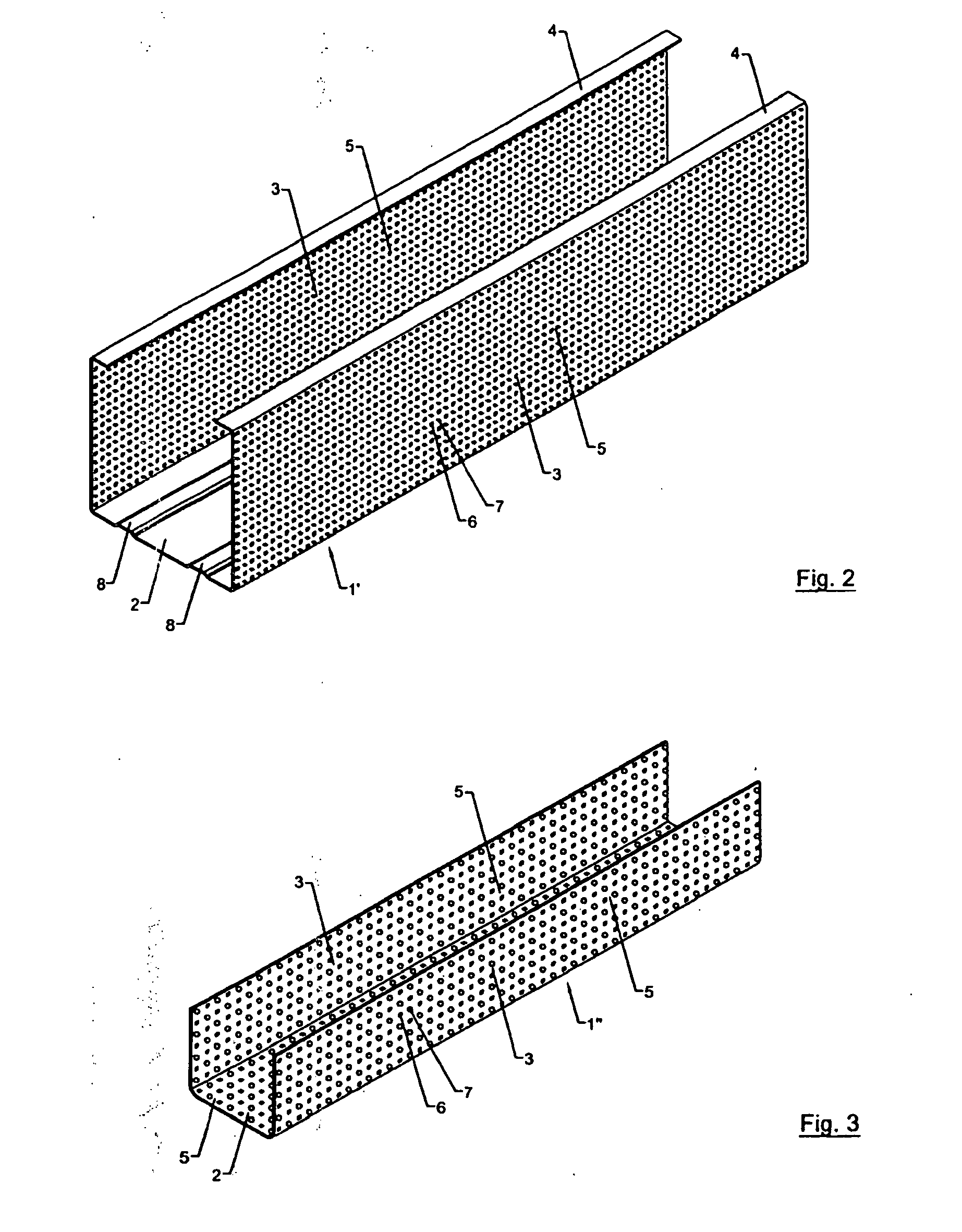Method for the production of a fastening element for dry construction elements
a technology of fastening elements and construction elements, which is applied in the direction of girders, mechanical devices, walls, etc., can solve the problems of not always easy to precisely position screws and not lead to optimal handling of fastening elements, and achieve the effect of being mounted especially easily
- Summary
- Abstract
- Description
- Claims
- Application Information
AI Technical Summary
Benefits of technology
Problems solved by technology
Method used
Image
Examples
Embodiment Construction
[0040]FIGS. 1a, 2 and 3 each show a fastening element 1, 1′, 1″ for dry construction elements. The fastening elements 1, 1′, 1″ are each made of a profiled sheet metal material having a bottom section 2 at whose ends bent leg sections 3 are provided. The leg sections 3, each of which forms a fastening flange, extend essentially perpendicular to the bottom section 2.
[0041]In the embodiments shown in FIGS. 1a and 2, each of the outer ends of the leg sections 3 has bent strips 4 that face inwards and that form support edges. Such fastening elements 1, 1′ are also referred to as C-sections.
[0042]The fastening element 1″ shown in FIG. 3, which does not have a bent strip at the outer ends of the leg sections 3, is a so-called U-section.
[0043]The described fastening elements 1, 1′, 1″ can be employed in dry construction as support structures, for example, for building partitions, suspended ceilings, etc.
[0044]The fastening elements 1, 1′, 1″ shown are made of metal, especially of galvanize...
PUM
| Property | Measurement | Unit |
|---|---|---|
| inclination angle N | aaaaa | aaaaa |
| inclination angle N | aaaaa | aaaaa |
| length | aaaaa | aaaaa |
Abstract
Description
Claims
Application Information
 Login to View More
Login to View More - R&D
- Intellectual Property
- Life Sciences
- Materials
- Tech Scout
- Unparalleled Data Quality
- Higher Quality Content
- 60% Fewer Hallucinations
Browse by: Latest US Patents, China's latest patents, Technical Efficacy Thesaurus, Application Domain, Technology Topic, Popular Technical Reports.
© 2025 PatSnap. All rights reserved.Legal|Privacy policy|Modern Slavery Act Transparency Statement|Sitemap|About US| Contact US: help@patsnap.com



